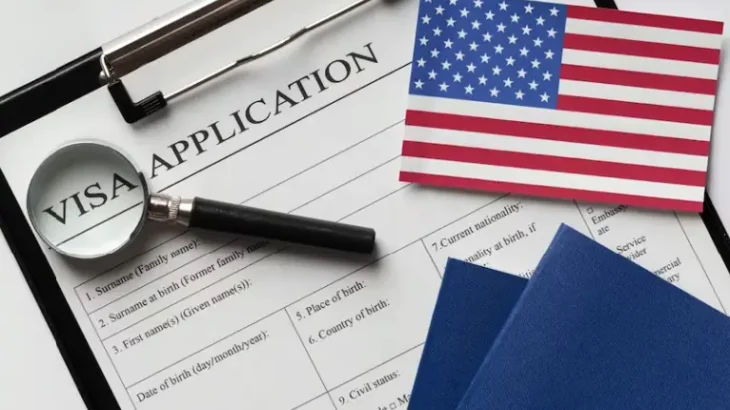A Dictionary of Terms
EB-5 Reform and Integrity Act of 2022
The Eb-5 Reform and Integrity Act of 2022 (“RIA”) was signed into law last March 15, 2022. It repealed former laws and added new authorizing provisions to substantially reform the Regional Center Program effectively on May 14, 2022. The reformed program is authorized until September 30, 2027.
The new law requires the United States Citizenship and Immigration Services (USCIS) to establish a special fund, called the EB-5 Integrity Fund. The EB5 Integrity Fund which is primarily used for the administration of the Regional Center Program.
The RIA also provided major changes that affect regional centers, developers, promoters, and existing and future investors.
EB-5 Integrity Fund
The RIA establishes a special fund called the EB-5 Integrity Fund which must be used by the Department of Homeland Security (DHS) for the following purposes:
- Detect and investigate fraud or other crimes;
- Determine if the regional centers, new commercial enterprises, job-creating entities or alien investors comply with U.S. immigration laws;
- Conduct site visits and audits; and
- For other purposes as the DHS deems
asnecessary.
Integrity Fund Fee
Annual
The law requires that the Integrity Fund be financed through a collection of annual fees paid from designated regional centers. The first Integrity Fund fee was due to be paid by October 1, 2022 penalties for unpaid fees being imposed starting October 31, 2022.
The law sets a standard annual fee of $20,000 USD for each designated regional center. However, for regional centers with “20 or fewer total investors in its New Commercial Enterprises”, the annual fee is reduced to $10,000 USD.
Late
The law also requires the DHS to impose a penalty fee on a regional center that fails to pay the annual Integrity Fund fee within 30 days after the date it’s due. The USCIS is required to terminate the designation of any regional center failing to pay the fee within 90 days after the date on which it is due.
Please take note that termination is not automatic and the regional center can still prove it has paid the proper amount by the due date.
Payment Process
Each regional center must pay the corresponding annual fee to the online form hosted at Pay.gov with either: (1) a valid credit or debit card; or (2) by authorizing an ACH Debit transaction where the regional center provides their U.S. bank routing and the checking account numbers. Payment must be made by the authorized individual on behalf of the regional center.
Check this notice for more information about the Integrity Fund Fee.
Adjusting to Inflation
The RIA also adjusted the minimum investment required for the EB5 Visa Program to keep up with inflation. The new minimum investment for an EB-5 Visa is $1,050,000 USD, which is lowered to $800,000 USD if the investment is in a targeted employment area (TEA) or high unemployment area (HUA).
Since the primary goal of the EB-5 program is job creation and stimulating economic growth, investors must still prove that their investment has created at least 10 full-time jobs for qualified U.S. citizens whether directly or indirectly.
Prioritizing Targeted Employment Areas (“TEA”)
The RIA prioritizes projects in TEAs to encourage investment in areas with high unemployment rates to promote economic growth, stimulate job creation, and revive struggling communities.
The RIA also renewed the Regional Center Program, extending it until September 2027 to give stability and continuity to investors and developers involved with regional centers.
Assuring Faster and Easier Process
In addition to strengthening the program, the new law has made the EB-5 application process more open and efficient.
The RIA allows concurrent visa filing. Concurrent Filing enables investors to apply for adjustment to U.S. Permanent Resident status (also known as a “Green Card”) while also their EB-5 based application is pending. This enables investors in a qualified EB5 project to obtain their Employment Authorization Document (EAD) and travel permit simultaneously with the filing of their form I526E.
The RIA also includes stronger measures to protect investors in the EB5 program. It is now mandatory to have background checks for regional center leaders, project developers, and other associated individuals. It also gives the DHS the power to ensure compliance with the law, conduct inspections, and prevent illegal activity.
Summary of the following key items:
“Grandfathering.”
Grandfathering of the prior Regional Center (RC) enables pre-RIA EB5 investors to preserve their eligibility as of the time they filed their applications.
Investment Amounts and Arrangements
For new filings, the minimum investment in a TEA or HUA is increased to $800,000 USD. A targeted employment area (TEA) is an area that’s either rural or high unemployment areas. Current USCIS policy is to adjudicate whether the relevant area is a TEA or HUA when adjudicating the project application for regional center filings or for standalone investments.
If the investment is outside the TEA or HUA, the minimum investment is $1,050,000 USD. The investment amount will be adjusted accordingly with the inflation every 5 years starting January 1, 2027.
The $800,000 USD investment can also be used in infrastructure projects where the government entity contracts to develop public works with EB-5 financing, like a private municipal bond deal.
Certain USCIS interpretations under the previous law were included in the RIA. The purchase of publicly available bonds, whether municipal or for-profit, no longer qualifies so funds cannot be redeployed to bond programs.
Reserved Visas
Certain visas are now “reserved” each fiscal year:
- 20% for rural area investments
- 10% for high unemployment area investments; and
- 2% for infrastructure projects investments
Any unused visas from the reserved categories above will carry over to the following year.


























